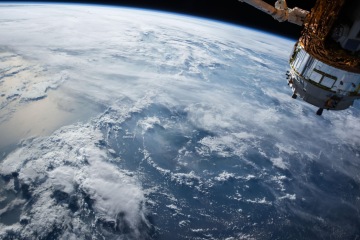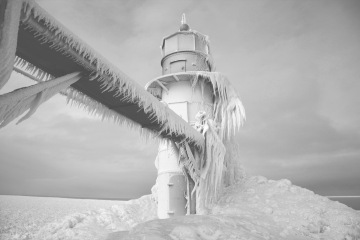Satellite data boost the ability of the A&E industry to fight climate change

The architectural landscape began a drastic change in the second half of the 20th century as the human population entered an exponential growth, technology took to a rapid evolution, and we consequently started building cities of never-before-seen shapes and sizes. We have been on this road for many decades and we are seeing the positive and negative implications. As time passes, we are becoming more and more competent in designing our habitats, but at the same time, we can conclude that without utilizing cutting-edge technologies, our consumption levels are unsustainable, and that our architectural traditions are not following the pace of the on-going climatic changes.
The impact of climate change and sudden destructive weather events create the need to build cities and buildings that are well-designed for the particular location. Not only does this apply to urban constructions, but rural and industrial developments as well. As Davina Jackson (author of the book Data Cities: How Satellites are Transforming Architecture and Design) points out, a building should not be designed as an isolated object inserted onto a plot of land, but it should interact with its environment in a harmonious and ecologically sustainable way. Natural systems planning is becoming a common requirement in engineering and architecture.
The role of satellite data in architecture
Satellite-enhanced design data is expected to transform the way we design our living and working environments. The first time our civilization enjoyed having a space-perspective on our home planet was when Google Earth was launched. But our “artificial moons” circling the globe are able to observe a vast range of environmental conditions besides visual layouts of landscapes.
Every building is constructed in accordance with the architectural plans. These plans need to be based on accurate calculations and viable assumptions about the circumstances that are anticipated in the lifetime of the building. One of the most important factors to consider is the way mother nature will treat the building - this is where satellite data can provide superior insight.
Traditional meteorological sources are not sufficient
Before we had access to data collected by satellites, we could only rely on land-based climate and geographical information to inform building design decisions. To be fair, we get a lot of inputs from weather stations, such as statistics about temperature, wind speed, and air pressure. These datasets, in most cases, do not include measurements of solar radiation, cloud coverage, air quality, nor do they provide reliable weather data for locations outside of weather station measuring range (for local scale purposes, the effective range is 100 m - 3 km). There is an information gap hindering cost-effective optimization of building energy performance.
To fill this gap, one has to have an external view enabled by Earth observation satellites that record data via advanced sensors. More than 650 Earth observation satellites are orbiting our planet and serving different purposes, including collecting climate-related inputs. But this is still not sufficient in itself.
Satellite-enhanced climate data for building design
To provide satellite-enhanced "climate design data" (a term explained in our earlier article) that would be of practical use to architects and engineers, the collected data needs to be unified, recalculated, and processed into output in the format necessary for the specific design purpose. MeteoInsight uses satellite inputs from NASA and ESA, weather station inputs from WMO, and climate model inputs from ECMWF to deliver reliable site-specific climate design data.
Are satellite-enhanced design data really so important?
We mentioned several limitations of traditional climate design data in our earlier article. One of them was the reduced accuracy of this data, created from weather station measurements, for building sites located kilometers away from a weather station. To give a specific example: a study conducted by the Faculty of Civil Engineering of the Czech Technical University in Prague found that the air temperature between two weather stations within a similar geographical location (only 17 km away from each other) and at a similar altitude (altitude difference of only 10 m) can differ on average by 3.5°C, but in some cases even by up to 18°C. Therefore, areas that are generally considered as relatively "close by" and as having the "same climate" show considerable climatic deviations for engineering purposes. This discrepancy can be solved only by the addition of measurements from satellites.
Such specific satellite-enhanced intelligence and forecasts improve the accuracy of building performance simulations and energy designs, reduce capital costs of HVAC systems, minimize the need for environmental impact reports at later stages of construction, and reduce the operating costs of the building. If you are interested in how to obtain such precise design data, feel free to contact us via the contact form at the bottom of our page.
RECOMMENDED ARTICLES
Where satellite-enhanced climate design data leaves a massive impact
Climate design data is used in various stages of building design, from building simulation, through HVAC sizing, to building envelope design. The accuracy of data in all these processes is crucial for avoiding the short and long term issues related to the building's environmental impact, tenant experience and consequently its market value.
Today’s Climate Design Data is not enough for sustainable building design
It has become increasingly important to adapt buildings to their surroundings in order to improve their indoor health, energy consumption, and carbon footprint. For this process to be as effective as possible, climate design data accurate for the specific location of a building site is required. However, current sources fail to provide such data.
Share with your friends:




